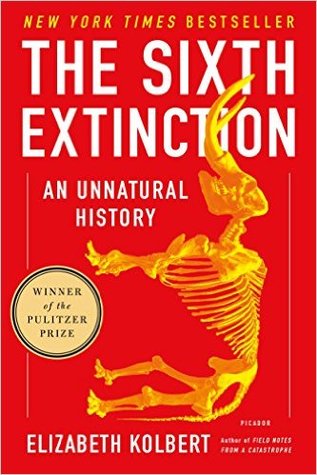More on this book
Community
Kindle Notes & Highlights
Read between
November 17 - November 27, 2022
One of the defining features of the Anthropocene is that the world is changing in ways that compel species to move, and another is that it’s changing in ways that create barriers—roads, clear-cuts, cities—that prevent them from doing so.
When Alroy ran the simulations for North America, he found that even a very small initial population of humans—a hundred or so individuals—could, over the course of a millennium or two, multiply sufficiently to account for pretty much all of the extinctions in the record. This was the case even when the people were assumed to be only fair-to-middling hunters. All they had to do was pick off a mammoth or a giant ground sloth every so often, when the opportunity arose, and keep this up for several centuries. This would have been enough to drive the populations of slow-reproducing species first
...more
From a human perspective, though, it’s an immensity. For the people involved in it, the decline of the megafauna would have been so slow as to be imperceptible. They would have had no way of knowing that centuries earlier, mammoths and diprotodons had been much more common.
The Anthropocene is usually said to have begun with the industrial revolution, or perhaps even later, with the explosive growth in population that followed World War II. By this account, it’s with the introduction of modern technologies—turbines, railroads, chainsaws—that humans became a world-altering force. But the megafauna extinction suggests otherwise. Before humans emerged on the scene, being large and slow to reproduce was a highly successful strategy, and outsized creatures dominated the planet. Then, in what amounts to a geologic instant, this strategy became a loser’s game. And so it
...more
Meanwhile, eliminating the megafauna didn’t just eliminate the megafauna; in Australia at least it set off an ecological cascade that transformed the landscape. Though it might be nice to imagine there once was a time when man lived in harmony with nature, it’s not clear that he ever really did.
There is every reason to believe that if humans had not arrived on the scene, the Neanderthals would be there still, along with the wild horses and the woolly rhinos. With the capacity to represent the world in signs and symbols comes the capacity to change it, which, as it happens, is also the capacity to destroy it. A tiny set of genetic variations divides us from the Neanderthals, but that has made all the difference.
To the extent that we can identify the causes of these revolutions, they’re highly varied: glaciation in the case of the end-Ordovician extinction, global warming and changes in ocean chemistry at the end of the Permian, an asteroid impact in the final seconds of the Cretaceous. The current extinction has its own novel cause: not an asteroid or a massive volcanic eruption but “one weedy species.” As Walter Alvarez put it to me, “We’re seeing right now that a mass extinction can be caused by human beings.”
The one feature these disparate events have in common is change and, to be more specific, rate of change. When the world changes faster than species can adapt, many fall out. This is the case whether the agent drops from the sky in a fiery streak or drives to work in a Honda. To argue that the current extinction event could be averted if people just cared more and were willing to make more sacrifices is not wrong, exactly; still, it misses the point. It doesn’t much matter whether people care or don’t care. What matters is that people change the world.
This capacity predates modernity, though, of course, modernity is its fullest expression. Indeed, this capacity is probably indistinguishable from the qualities that made us human to begin with: our restlessness, our creativity, our ability to cooperate to solve problems and complete complicated tasks. As soon as humans started using signs and symbols to represent the natural world, they pushed beyond the limits of that world. “In many ways human language is like the genetic code,” the British paleontologist Michael Benton has written. “Information is stored and transmitted, with
...more
This highlight has been truncated due to consecutive passage length restrictions.


